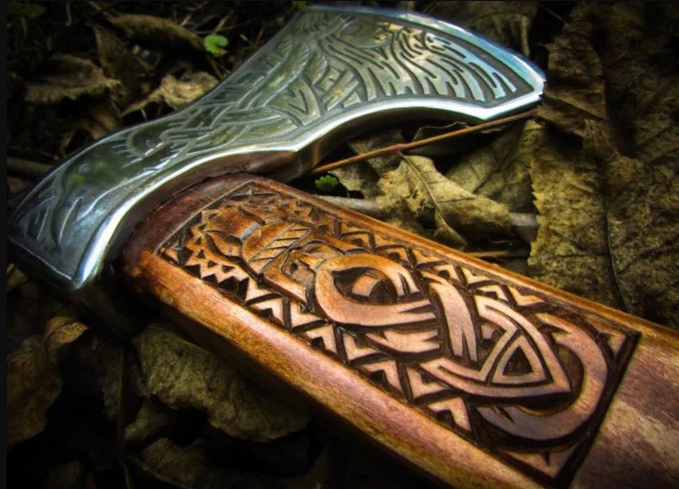In the annals of Norse history, the Viking axe stands as a symbol of both utility and ferocity. These formidable weapons played a pivotal role in the everyday lives and legendary conquests of the Vikings. Let’s delve into the history of the Viking axe, exploring its origins, variations, and the indelible mark it left on the pages of history.
Origins and Utility: The Viking axes, or “øks” in Old Norse, ware not merely a weapon; it was a versatile tool deeply ingrained in Viking culture. Originally developed for cutting wood, clearing land, and crafting, the axe evolved into a lethal instrument of war as the Vikings expanded their territories and engaged in raiding and conquest.
Design and Types: Viking axes came in various designs, each tailored to specific purposes. The most common types were the broad axe and the bearded axe. The broad axe had a wide cutting edge, ideal for chopping and cleaving, while the bearded axe featured a distinctive extended blade or “beard” that allowed for a longer cutting edge, giving it added versatility in both combat and utility.
Battle Axes: In the context of warfare, the Viking battle axe became a symbol of the Vikings’ martial prowess. These weapons were designed for swift and brutal strikes, with their sharp blades capable of delivering devastating blows. The balance between the head and the haft made Norse axes well-suited for throwing, adding an element of surprise to their military tactics.
Ceremonial and Symbolic Significance: Beyond their practical applications, Viking axes held ceremonial and symbolic importance. Axes were often intricately decorated, featuring ornate carvings and symbols reflecting the owner’s status, allegiance, or beliefs. Some Viking chiefs and warriors even held ceremonies where they would ritually lay their axes on sacred ground, symbolizing their commitment to honor and duty.
Legacy and Influence: The legacy of the Viking axe endures in modern times, not only as a historical artifact but also as a symbol in popular culture. The iconic image of a Viking warrior wielding a double-headed axe has become synonymous with Norse strength and resilience. Today, enthusiasts and historians alike appreciate the craftsmanship and significance of these axes, with replicas and reconstructions providing a tangible connection to the past.







